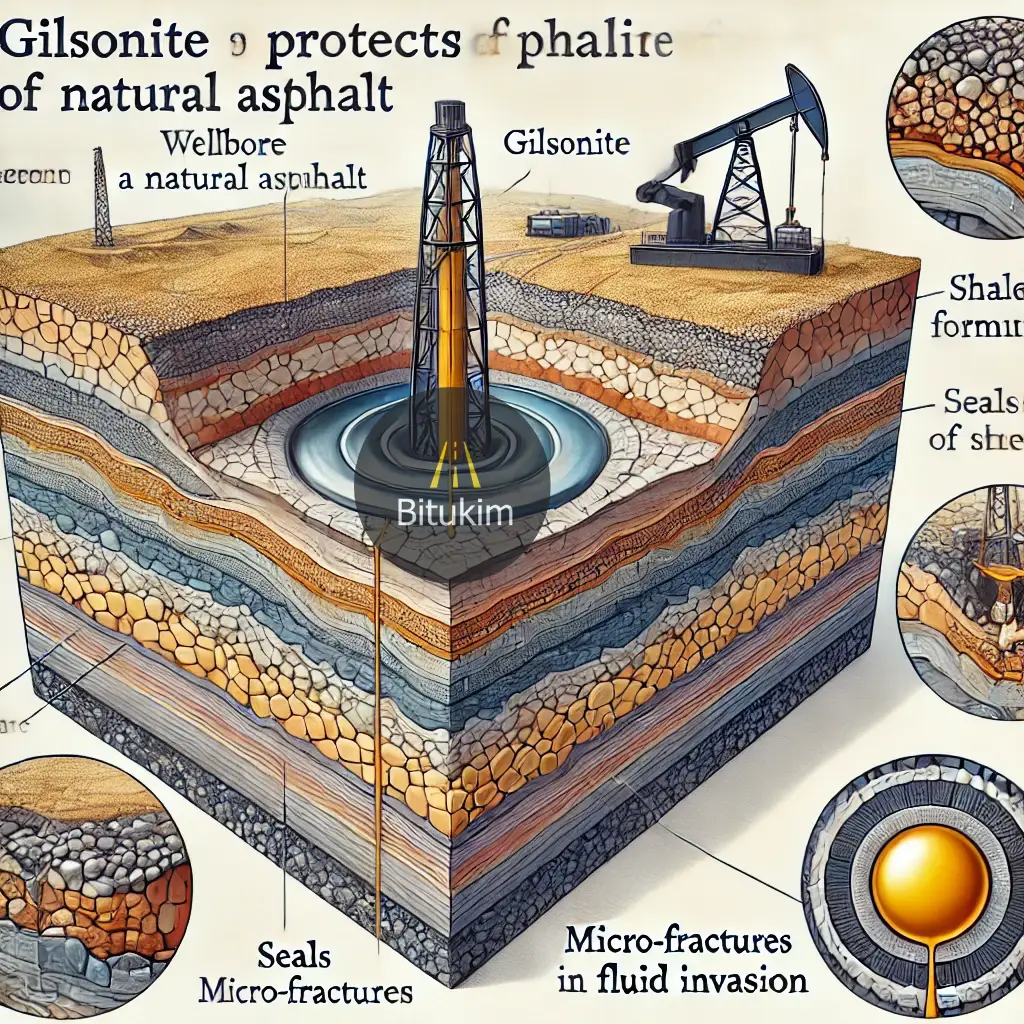
Gilsonite shale formation protection, Gilsonite is used to protect shale formations during drilling operations, addressing common issues such as instability, swelling, and fluid invasion that can compromise the integrity of the shale. Here’s how Gilsonite contributes to shale formation protection:
How Gilsonite Protects Shale Formations:
- Sealing and Plugging:
- Gilsonite acts as a sealing agent by forming a thin, impermeable layer on the surface of the shale. This layer plugs micro-fractures and pores in the shale, preventing drilling fluids from penetrating and causing destabilization.
- Creating an Impermeable Barrier:
- The impermeable barrier created by Gilsonite isolates the shale from contact with water-based or oil-based drilling fluids. This is crucial for preventing reactions that lead to swelling and weakening of the shale.
- Reducing Fluid Loss:
- By sealing off pore spaces and fractures, Gilsonite helps reduce the loss of drilling fluids into the shale formation. This control of fluid loss maintains the pressure balance and stability of the wellbore.
- Inhibiting Shale Swelling:
- Shale formations often contain clay minerals that swell when exposed to water. Gilsonite’s sealing properties reduce the contact between these clays and the drilling fluid, inhibiting swelling and maintaining the structural integrity of the shale.
- Minimizing Shale Disintegration:
- The protective layer formed by Gilsonite prevents the shale from disintegrating or breaking apart when it comes into contact with drilling fluids. This minimizes the risk of wellbore collapse and maintains a stable drilling environment.
- Improving Wellbore Stability:
- By stabilizing the shale and reducing fluid invasion, Gilsonite contributes to overall wellbore stability. This helps prevent common issues such as wellbore instability, sloughing, and collapse.
- Enhanced Lubricity:
- Gilsonite provides natural lubricating properties that reduce friction between the drill string and the wellbore. This not only aids in smooth drilling but also helps in maintaining the stability of the shale formation.
- Compatibility with Various Mud Systems:
- Gilsonite can be effectively used in both water-based and oil-based mud systems, making it a versatile option for shale protection in different drilling conditions.
- Thermal Stability:
- Gilsonite remains stable at high temperatures, which is beneficial for deep wells or high-temperature formations where other additives might fail.
Benefits of Using Gilsonite for Shale Formation Protection:
- Enhanced Formation Integrity: By reducing swelling and preventing fluid invasion, Gilsonite helps maintain the mechanical strength of the shale, leading to a more stable formation.
- Reduced Non-Productive Time (NPT): Effective shale protection reduces disruptions and delays caused by formation instability, leading to more efficient drilling operations.
- Cost Savings: Preventing issues like wellbore collapse and excessive fluid loss with Gilsonite can result in significant cost savings by avoiding expensive remedial measures.
- Operational Safety: A stable wellbore with protected shale formations enhances safety by reducing the risk of accidents and operational hazards.
Applications:
- Reactive Shales: Gilsonite is particularly useful in drilling operations involving reactive shales that are prone to swelling and instability.
- High-Temperature Wells: Its thermal stability makes it suitable for challenging environments such as deep and high-temperature wells.
In summary, Gilsonite offers a reliable solution for protecting shale formations during drilling, ensuring better wellbore stability, reduced operational issues, and improved overall drilling efficiency.

